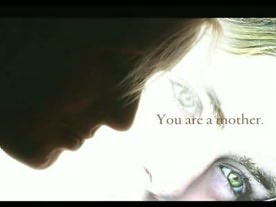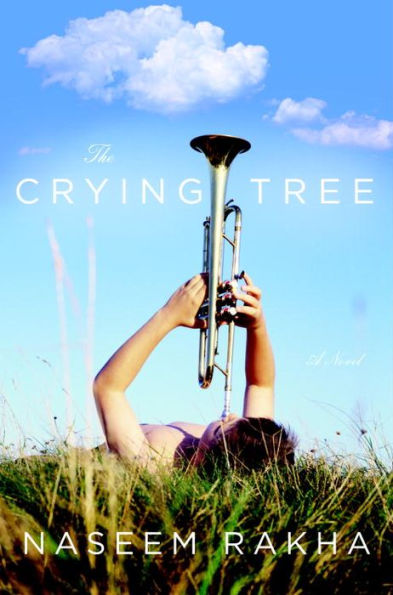

eBook
Related collections and offers
Overview
Shortly after Irene and Nate Stanley move to Oregon with their two children, Bliss and Shep, the unthinkable happens: Fifteen-year-old Shep is shot and killed during an apparent robbery in their home. The murderer, a young mechanic with a history of assault, robbery, and drug-related offenses, is caught and sentenced to death.
Shep’s murder sends the Stanley family into a tailspin, with each member attempting to cope with the tragedy in his or her own way. Irene lives week after week, waiting for Daniel Robbin’s execution and the justice she feels she and her family deserve. The weeks turn into months and then years. Ultimately, faced with a growing sense that Robbin’s death will not stop her pain, Irene takes the extraordinary and clandestine step of reaching out to her son’s killer.
Years later, Irene receives the notice that she had craved for so long—Daniel Robbin has stopped his appeals and will be executed within a month. This announcement shakes the very core of the Stanley family. Irene, it turns out, isn’t the only one with a shocking secret to hide. And as the execution date nears, the Stanleys must face difficult truths to find a way to come to terms with the past.

Product Details
| ISBN-13: | 9780767932202 |
|---|---|
| Publisher: | Crown Publishing Group |
| Publication date: | 07/07/2009 |
| Sold by: | Random House |
| Format: | eBook |
| Pages: | 368 |
| File size: | 3 MB |
About the Author
Read an Excerpt
The Crying Tree
Naseem Rakha
C H A P T E R 1
October 1, 2004
THE DEATH WARRANT ARRIVED THAT morning, packaged in a large white envelope marked confidential and addressed to Tab Mason, Superintendent, Oregon State Penitentiary. Mason had been warned the order might be coming. A couple of weeks earlier, the Crook County DA had let the word slip that after nineteen years on death row, condemned murderer Daniel Joseph Robbin had stopped his appeals.
Mason dropped the envelope on his desk, along with a file about as thick as his fist, then ran his hand over the top of his cleanly shaved skull. He’d been in corrections for twenty years–Illinois, Louisiana, Florida–and on execution detail a half- dozen occasions, but he’d never been in charge of the actual procedure. Those other times he’d simply walked the guy into the room, strapped him down, opened the blinds on the witness booth, then stood back and waited. He’d worked with one guy in Florida who’d done the job fifty times. “It becomes routine,” the officer told Mason, who was busy puking into a trash can after witnessing his fi rst execution.
Now Mason slid into his chair, flicked on his desk lamp, and opened Robbin’s file. There was the man’s picture. A front and side shot. He had been nineteen years old when he was booked, had long scraggly hair and eyes squinted to a hostile slit. Mason turned the page and began to read. On the afternoon of May 6, 1985, Daniel Joseph
Robbin beat, then shot fifteen-year-old Steven Joseph Stanley (aka “Shep”) while in the process of robbing the boy’s home at 111 Indian Ridge Lane. The victim was found still alive by his father, Deputy Sheriff Nathaniel Patrick Stanley, but died before medical
assistance could arrive. The remaining family members–wife and mother, Irene Lucinda Stanley, and twelve-year-old Barbara Lee (aka Bliss)–were not present during the incident. The Stanleys, who were originally from Illinois, had been living in Oregon for a year and a half when the incident occurred.
The superintendent leafed through more pages–court documents, letters, photos–then leaned back in his chair and looked out his window. A squat rectangular building sat on its own toward the north end of the prison’s twenty-five-acre grounds. The last time someone had been executed out there was seven- plus years ago. Mason had been working his way up through the ranks at the Florida State Prison out of Raiford, aspiring for a job like the one he had now–head of a large correctional institution, good salary, power. He blew out a long, disgusted breath. Why now? The Oregon penitentiary was way overcrowded, inmates doubled up in their cells, half of them out of their minds; fights were breaking out left and right, gangs getting tougher to handle; there were race issues, drugs–all while funding for counseling and rehab continued to get slashed. Why now, and why this?
Mason reread the warrant. The execution was scheduled for October 29, 12:01 A.M.
“Less than a goddamn month,” he said, shaking his head. Then, as if to rouse himself, he clapped his mismatched hands, one as dark as the rest of his black skin, one strangely, almost grotesquely white. There was no complaining in this job, he told himself. No moaning about what needed to be done. No stammering or stuttering or
doing anything that might show the slightest bit of resistance or hesitancy. No. Everything in his career had been leading him to this kind of challenge: his demeanor, his words, his actions would all set a tone. And he knew exactly what that tone had to be.
Reading Group Guide
Dear Readers,
In 1996, I was assigned to cover Oregon’s first execution in over thirty years. At the time I had never given much thought to the death penalty and what it would take for the state to plan out, prepare, and then kill a man. After the assignment, I wanted to learn more, so I began to interview death-row inmates, the people they had harmed, and the men and women we entrust to carry out our nation’s most severe sentence. During that time I heard many stories, some of them abhorrent and some heartbreaking, but by far the most compelling were those told by the people who had come to terms with the murder of a loved one and no longer felt it necessary to seek retribution. This arc, from the most desperate kind of anguish to reconciliation and even love stunned me, and compelled me to write The Crying Tree.
I offer these questions because they are the very ones I asked myself as I wrote this book.
1.
Why did Irene believe that she could not tell anyone about having forgiven Robbin? What did she think would happen? What was she afraid of? Have you ever forgiven someone but been afraid to admit it?
2.
Do you think that, like Irene, you could forgive someone who harmed your family?
3.
Irene tells her sister that forgiving Robbin was not a choice. What do you think she meant?
4.
Do you think it is necessary to have a belief in a God or a higher power to have made the choices Irene made? Do you think the ability to forgive can be learned?
5.
In the first chapter, Tab Mason describes his reaction to seeing his first execution. Have you ever given much thought to how executions affect those who must carry them out?
6.
Secrets—Nate’s, Shep’s, Irene’s—are the driving force behind the tragedy in this story. Do you think it is common for families to operate in such isolation from one another?
7.
Nate says he moved his family west to help Shep. How did he think this would help?
8.
How would you describe the novel’s central message or theme? And how does the ending of the book affect your understanding of the novel’s central message or theme?
9.
Tab Mason has an unusual skin disorder. Why do you think I chose to mark him in such a way? What difference would it make, if any, if he were simply a black man? Or a white man?
10.
Tab Mason is a man who offers “no surprises.” He is painstakingly in control of his words, his thoughts, and his emotions. And this has paid off, giving him the job, power, and resources to live a very comfortable life. Why then do you think he was willing to risk it all to help Irene Stanley?
11.
Bliss recounts a time she found her father having an emotional breakdown while in the barn. The event was heart-wrenching for her. Bliss loved and cared for her father more than anyone, yet she does nothing to try to help. Does it make sense to you that Bliss did not try to step in and help her father?
12.
Irene and Bliss had a difficult relationship. How was this transformed by Irene’s act of forgiveness?
13.
Bliss feels compelled to forgo her dream of college so that she can stay in Carlton and help her parents. Have you had times in your life when you have given up your dreams to help others?
14.
Why do you think Daniel Robbin refuses the offer to introduce new evidence that might overturn his murder conviction?
15.
In the end, Nate is in a bus going to Shep’s grave. Why do you think he is doing this? Do you think Nate’s character changed over the course of the book? If so, how? If not, why not?
16.
Irene’s relationship with her church and faith were challenged in this story. In the end do you think her belief in God was stronger or weaker?
17. Why, of all the people Irene had in her life, did she open up to Doris, the woman who owned the Hitching Post in Wyoming?
18.
After Nate’s confession, Irene leaves her husband. As she drives across the country, how do her feelings about her son’s death, Nate , and herself change?
19.
Irene had strong feelings about staying around her family (“You don’t leave family,” in chapter 2). Yet emotionally, Irene did leave her family. She was not there for her daughter through high school, she never turned to her sister for help, and she and Nate’s relationship was estranged. In the end, what did this belief in family mean? What conclusions about Nate and Irene’s future can you draw from this sentiment?
20.
In the end, what do you think Irene, Bliss, and Tab Mason’s actions meant to Daniel Robbin?
Related Subjects
Videos


